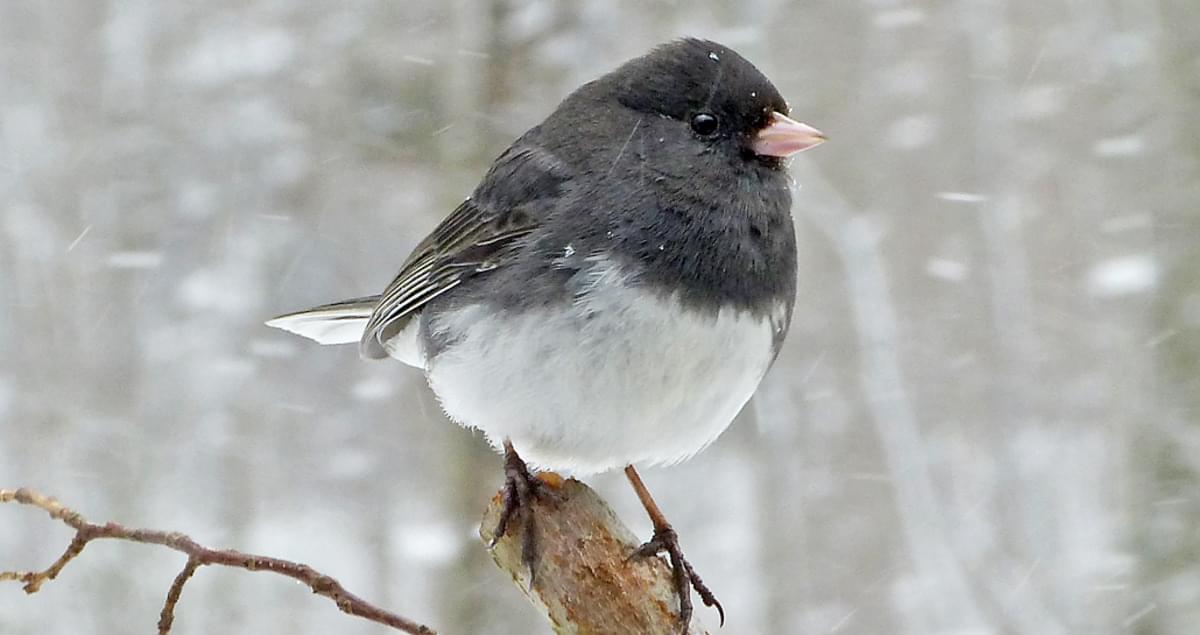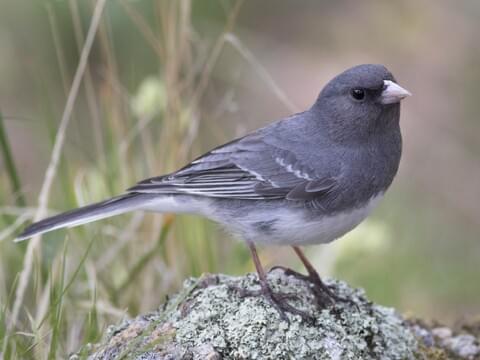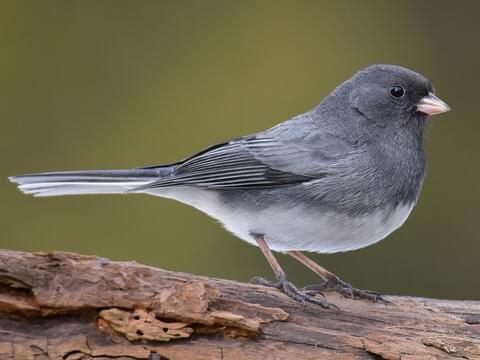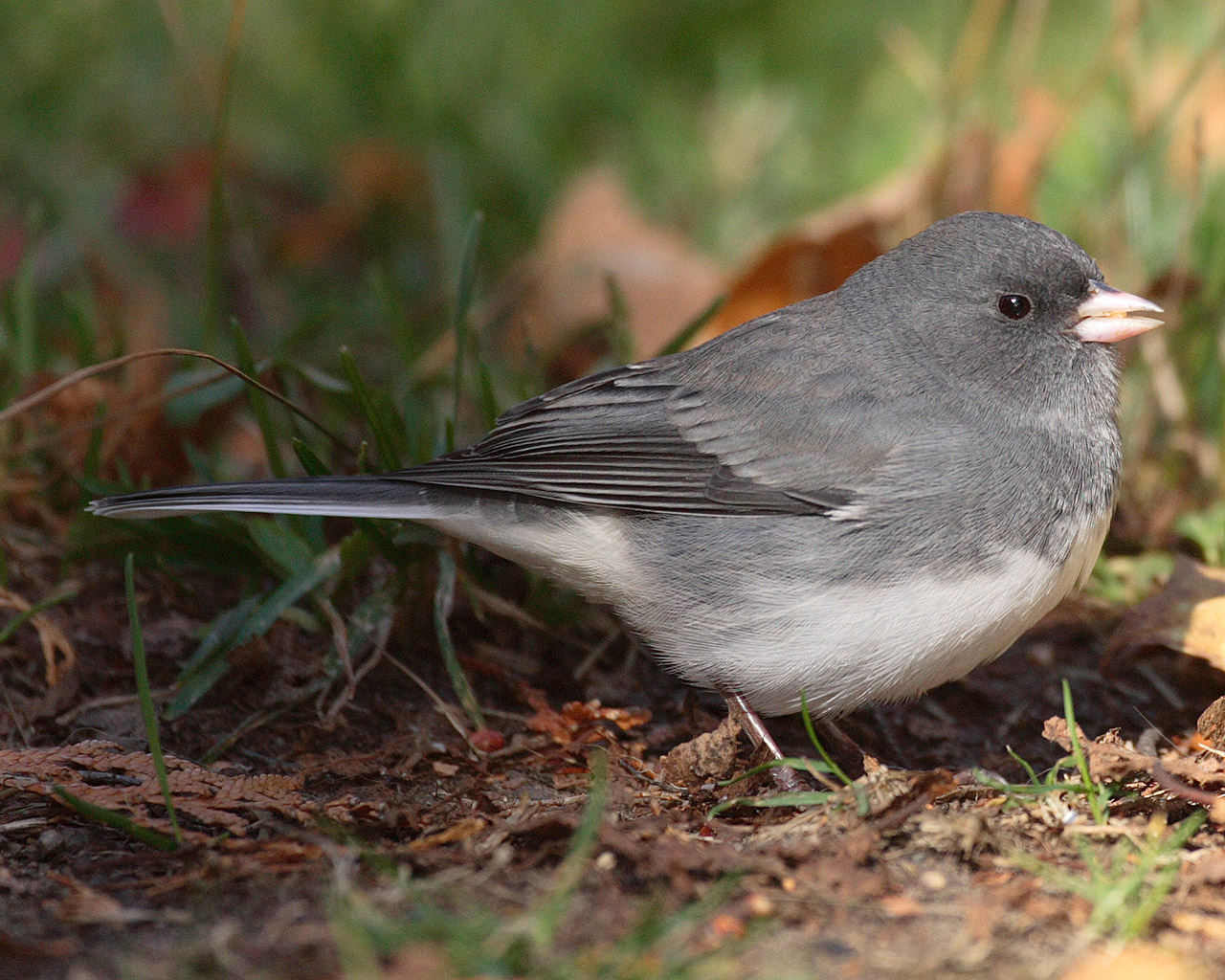Dark-eyed Juncos, small sparrows commonly found in the United States, possess a number of distinct characteristics that make them easily recognizable. These charming birds can often be seen frequenting backyard feeders, as well as coniferous forests and mixed woods. If you’re interested in attracting Dark-eyed Juncos to your own backyard, there are a few steps you can take. Planting trees and shrubs that provide food and shelter, offering their preferred foods at bird feeders, selecting specific feeders for them, and incorporating a water feature into your landscaping are all effective ways to create an inviting environment. With their round bodies, big heads, small pink beaks, pink legs, and flashing white outer tail feathers on a blackish tail, Dark-eyed Juncos are truly a sight to behold. These delightful birds primarily feast on small seeds, especially millet, and they have a preference for feeding on the ground. When it comes to nesting, Juncos simply choose dense shrubs on the ground within forested areas. During the winter months, they can often be spotted at bird feeders in residential areas. With an average lifespan of up to 10 years, Dark-eyed Juncos are a familiar species with several variations, including Oregon Juncos, Slate-colored Juncos, Guadalupe Juncos, White-winged Juncos, and Gray-headed Juncos.

Physical Characteristics
Body Shape
Dark-eyed Juncos are small sparrows known for their round bodies. They have a stout build, which gives them a compact and slightly plump appearance.
Head
The head of a Dark-eyed Junco is relatively large compared to its body size. It features a short, conical shape, and is usually characterized by a shade of blackish or dark gray.
Beak
The beak of a Dark-eyed Junco is small and pink. This delicate beak helps them efficiently forage for their preferred food sources, especially small seeds.
Legs
Dark-eyed Juncos have slender legs that are a pale pink in color. These legs allow them to navigate through different habitats and forage on the ground.
Tail Feathers
One of the most distinctive features of Dark-eyed Juncos is their tail feathers. The outer tail feathers, which are generally blackish in color, have white edges. These white edges create a beautiful contrast when the bird takes flight.
Plumage
Varied Plumage
Dark-eyed Juncos display a range of plumage variations across their different subspecies and populations. The variations include different shades of gray, brown, and black on their bodies, as well as variations in the markings on their heads.
Identifying Features
Although Dark-eyed Juncos come in various color patterns, they share certain identifying features. These features include their round bodies, big heads, small pink beaks, pink legs, and the flashing white outer tail feathers on their blackish tails. These features help birdwatchers and enthusiasts identify them in the field.
Habitat
Backyard
Dark-eyed Juncos are frequent visitors to backyard areas, especially during the colder months. They are attracted to environments that offer food and shelter, making backyards with suitable vegetation and bird feeders ideal for these birds.
Coniferous Forests
Dark-eyed Juncos are commonly found in coniferous forests, such as pine and spruce forests. These forests provide the necessary cover and food sources for the birds.
Mixed Woods
In addition to coniferous forests, Dark-eyed Juncos can also be found in mixed woodlands. This habitat type includes a combination of deciduous trees, such as oak or maple, along with evergreen trees.
Attracting Dark-eyed Juncos
Plant Trees and Shrubs
To attract Dark-eyed Juncos to your backyard, consider planting trees and shrubs that provide them with food and shelter. Species such as spruce, pine, juniper, and berry-bearing shrubs like elderberry or serviceberry are excellent choices.
Provide Food and Shelter
Creating a welcoming environment for Dark-eyed Juncos involves offering them food and shelter. Ensure there are bird feeders filled with their favorite seeds, and provide shrubs or dense vegetation where they can find cover when needed.
Select Bird Feeders
When selecting bird feeders for Dark-eyed Juncos, opt for designs that accommodate their feeding behaviors. Ground or platform feeders work well since Juncos prefer feeding on the ground, but open tray-style feeders and hopper feeders can also be suitable.
Water Feature
Including a water feature, such as a birdbath, in your backyard can further attract Dark-eyed Juncos. They will appreciate having a reliable water source for drinking and bathing, especially during hot summer months or dry spells.

Diet
Small Seeds
Dark-eyed Juncos primarily feed on small seeds as a significant portion of their diet. They have a particular preference for seeds such as those found in grasses, herbs, and weeds.
Preference for Millet
Among the various seeds, Dark-eyed Juncos have a special fondness for millet. Including millet in your bird feeders can help attract these sparrows to your backyard.
Ground-Feeding Behavior
Dark-eyed Juncos are ground feeders, which means they prefer to forage and feed on the ground. Their ability to hop and scratch the earth allows them to efficiently search for seeds and insects hidden in leaf litter.
Nesting Behavior
Ground Nesting
Dark-eyed Juncos have a unique nesting behavior. Rather than building nests in trees or shrubs, they prefer to nest directly on the ground. Their nests are often well-concealed among dense vegetation or under overhanging rocks.
Prefer Dense Shrubs in Forested Areas
When selecting nesting sites, Dark-eyed Juncos show a preference for dense shrubs in forested areas. These shrubs provide adequate cover and protection for their nests, ensuring the safety of their eggs and young.

Behavior in Residential Areas
Frequenting Bird Feeders
Dark-eyed Juncos are commonly seen around bird feeders in residential areas, especially during the winter months when food sources may be limited. They will eagerly visit feeders filled with their preferred seeds.
Winter Activity
Dark-eyed Juncos are highly active during the winter season, making them a common sight in many regions. They tolerate colder temperatures and can often be seen hopping and foraging on the ground, even in snowy conditions.
Lifespan
Average Lifespan
Dark-eyed Juncos typically have an average lifespan of around five to ten years. However, individual lifespans can vary based on factors such as habitat quality, predation risks, and overall health.

Variations of Dark-eyed Junco
Oregon Juncos
Oregon Juncos are a subspecies of Dark-eyed Juncos found primarily in the western part of North America. They exhibit a distinct plumage pattern with dark heads, bright chests, and brownish-gray backs.
Slate-colored Juncos
Slate-colored Juncos are another subspecies of Dark-eyed Juncos found across a wide range of habitats in North America. Their plumage is generally a solid slate gray, providing excellent camouflage in various environments.
Guadalupe Juncos
Guadalupe Juncos are a rare subspecies of Dark-eyed Juncos endemic to the Guadalupe Island off the western coast of Mexico. They have unique plumage, featuring dark heads, rusty-brown backs, and white bellies.
White-winged Juncos
White-winged Juncos, also known as White-winged Dark-eyed Juncos, are found in northern parts of North America. They have a distinctive white-wing patch on their wings, which differentiates them from other subspecies.
Gray-headed Juncos
Gray-headed Juncos are primarily found in the southern Rocky Mountains and have a grayish head. They have a mottled appearance, with a combination of brown, gray, and white feathers on their bodies.
By understanding the physical characteristics, habitat preferences, nesting behaviors, and feeding habits of Dark-eyed Juncos, bird lovers can create a welcoming environment that attracts and supports these beautiful sparrows. Whether in backyard feeders or natural habitats, the presence of Dark-eyed Juncos adds delight and diversity to any birdwatching experience.
Leave a Reply